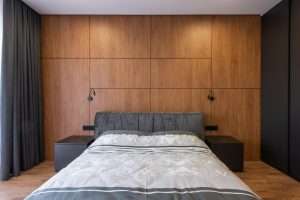3D-Printed Communities: Neighborhoods Built in 90 Days
The world of construction is constantly evolving with new technologies and techniques being introduced every day. One of the most revolutionary advancements in recent years is the use of 3D printing in the construction industry. While it has been used for smaller projects, it is now being taken to a whole new level with the development of 3D-printed communities. These neighborhoods are being built in just 90 days, completely transforming the traditional process of constructing a neighborhood. Let’s explore the world of 3D-printed communities and how this method is reshaping the future of construction.
The Rise of 3D-Printed Communities
What are 3D-Printed Communities?
3D-printed communities are the result of using large-scale 3D printers to construct houses and buildings. These printers use a process called additive manufacturing, which involves creating objects layer by layer using raw materials like concrete or even recycled materials like plastic. This technique allows for precise and accurate construction while significantly reducing construction time and costs.
How are They Built in 90 Days?
Traditionally, constructing a neighborhood would take months, if not years, to complete. A lot of time is spent on creating blueprints, ordering materials, and hiring labor. With 3D printing, the process is streamlined, and there is much less human labor involved. The design is fed into the 3D printer, and it can work 24/7, completing the construction in a fraction of the time. This not only saves time, but it also helps to reduce costs significantly.
The Benefits of 3D-Printed Communities
Aside from the reduced construction time and costs, there are many other benefits of 3D-printed communities. One of the most significant advantages is sustainability. As mentioned earlier, 3D printers can use recycled materials, reducing the amount of waste and promoting environmental sustainability. Additionally, these homes are highly energy-efficient, reducing the carbon footprint of the entire neighborhood.
3D-printed communities also have a higher quality finish as they are designed using advanced computer-aided design (CAD) software, leaving very little room for human error. The materials used in the construction also make the homes more durable and resistant to natural disasters such as earthquakes or hurricanes.
Challenges and Solutions
As with any new technology, there are challenges that come with 3D-printed communities. One of the main concerns is the lack of customization and personalization. With traditional construction, homeowners have the freedom to choose the design and materials used in their homes. With 3D printing, there is limited flexibility in the design, and homeowners may not have much say in the final product. However, this can be addressed by offering a range of customizable options for homeowners to choose from.
Another challenge is the upfront cost of investing in 3D printing technology. While it may be more cost-effective in the long run, the initial investment can be a barrier for many construction companies. To overcome this, partnerships and collaborations between construction companies and 3D printing companies can help ease the financial burden.
The Future of Construction
With the success of 3D-printed communities, it is only a matter of time before this method becomes more mainstream in the construction industry. As technology continues to advance, we can expect to see more innovations and improvements in 3D printing technology, making it an even more viable option for large-scale construction projects. This could potentially solve the ongoing housing crisis in many countries, providing affordable and sustainable housing options for millions of people.
In conclusion, 3D-printed communities are a game-changer in the construction industry. The ability to build a neighborhood in just 90 days while promoting sustainability and reducing costs is truly revolutionary. While there are challenges to overcome, it is evident that the benefits outweigh them, making 3D-printed communities the future of construction.











